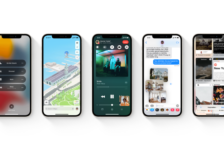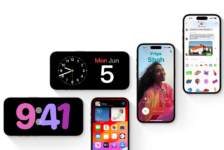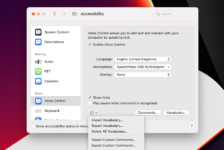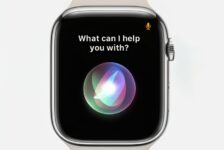Apple has just announced a range of new accessibility features that are designed for people with mobility, vision, hearing, and cognitive disabilities.
One of the most interesting concerns the Apple Watch. Following a software update later this year, people with upper limb mobility problems should be able to use AssistiveTouch for Apple Watch to control the wrist-worn device without touching the display or controls.
The company says the Apple Watch will soon be able to detect muscle movement and tendon activity through its built-in gyroscope and accelerometer sensors, allowing users to control a cursor on the watch screen, answer calls, access notifications, and more by making various movements and gestures. (You can see the new capabilities in action in this video)
A long time coming
The Apple Watch has never been the most accessible of Apple’s devices, particularly for people with upper limb problems. This has always seemed a huge missed opportunity with all the benefits that a wearable like the watch can offer for care, personal safety, and independence of people with the most severe physical impairments.
Since the Apple Watch launched in 2015 the company has provided only one significant accessibility setting for people with physical disabilities, which is the wheelchair workout setting.
It’s all meant if you are unable to touch the watch display, and controls like the side button, the device is almost completely inaccessible, except for the few things Siri can assist with through voice commands.
A significant part of my advocacy over the past four years has been about highlighting how inaccessible the Apple Watch is to people with upper limb weakness.
Back in 2017 I made a video illustrating the problems and called for the company to make the Watch much more accessible. I even suggested they use the in-built gyroscope and accelerometer to improve access. In that sense I put the solution on a plate for the company.
It’s good to see that Apple has finally accepted it needs to do more for people with limited mobility who need significantly more options to control the Apple Watch. For some disabled people it will be a real boon to more easily answer incoming calls, access Notification Center, Control Center, and more.
Observations
One of the most interesting new features of AssistiveTouch for Apple Watch is the ability to answer a phone call on the watch with a hand clench. Let’s hope the company remembers to include the ability to end a call, something they have failed to do on the iPhone.
For people with tremors, from Parkinson’s for example, will the built-in sensors on the watch be able to distinguish between a tremor and a gesture. Will there be any on-device user training and configuration so the sensors can machine learn what gestures the individual is physically capable of producing to control the watch. These are finer details that Apple hasn’t revealed yet.
It will be interesting to see what types of physical disabilities will be able to benefit most from AssistiveTouch for Apple Watch. For example, how sensitive will the sensors be, will they pick up the extremely minor movements people with very severe physical disabilities often have, such as muscular dystrophy and paralysis.
I’m concerned people who can’t raise and turn their wrist sufficiently to have a clear new of the watch display, to control cursor movements for example, may be left out. The company will need to make gestures as intuitive as possible, and remember that not everyone with physical disabilities will be able to move their wrist so the display comes into clear view.
I hope the new gesture-based tech won’t detract from improvements the company needs to make to using voice to control the Apple Watch. There will be people with very severe physical disabilities who may not be able to perform sufficiently significant gestures to control the Apple Watch with AssistiveTouch. Voice will continue to be important for people with severe disabilities who have speech and want to control as much of the watch as possible with just their voice.
When it comes to voice access there are still a member of flaws in watchOS. It’s not possible to answer a phone call on the Apple Watch with a voice command, or end a phone call in the same way. These are major omissions for people with physical disabilities that need addressing this year.
Apple hasn’t said which versions of Apple Watch will be compatible with AssistiveTouch for Apple Watch so users don’t know yet whether they will need to invest in a new Apple Watch, likely to be released in the autumn, or whether their existing watch will work with the new feature.
If you do need to buy a new Apple Watch to get all the life changing benefits of using AssistiveTouch then I think Apple should consider offering some kind of discount for the relatively small number of severely disabled users who will benefit most from technology, in the same way the company offers discounts to students and charities. This revolutionary tech is too important to leave people behind because of cost.
Wrap up
Apple says AssistiveTouch for Apple Watch will be available later this year in a software update across its devices. However, expect to hear more details of all the new accessibility features soon at the company’s WWDC event on 7 June.
The proof is always in the pudding but these exciting changes coming to the Apple Watch could potentially be really transformative for people that have been neglected by the California tech giant for a long time.





